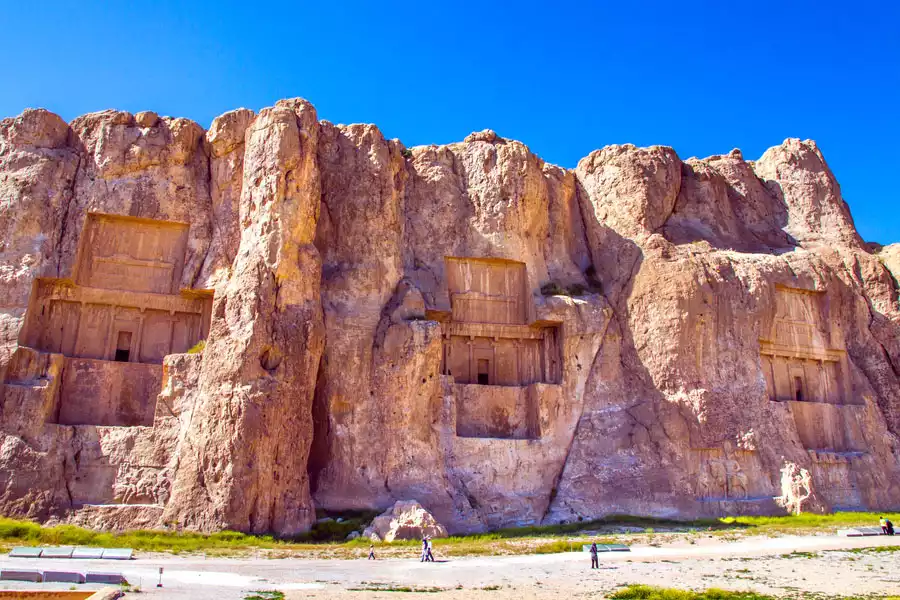Historic Religious Naqshe Rostam Sight

Naqshe Rostam is a historical sight close to Persepolis and Pasargadae which dates back to about four thousand years ago. Prominent historical attractions in Naghsh-e Rostam include historical tombs, Iran ancient inscriptions and reliefs, and Iranian ancient art. One of the prominent reasons for the fame of this region is the tombs of Achaemenid kings.
This area had a special value to the Achaemenid and Sassanid kings. This ancient spiritual sight of Naqshe Rostam, is a good source that help understanding the history of Iran in the BC and early AD. In the following, we will introduce Naqshe Rostam and its historical monuments.
Achaemenid Tombs in Naghshe Rostam

Naghsh-e Rostam is located 5 km away from Persepolis. In this place, which must have had a special sanctity in the past, Darius I of the Achaemenid dynasty built his tomb in the form of a tomb on a rocky mountain. Construction of this tomb began in 519 BC. After him, three other Achaemenid kings, imitating him, built three more tombs for themselves next to the tomb of Darius. In this place, there is a beautiful building, the Kaaba of Zoroaster and some reliefs from the Sassanids. There is also an Elamite relief in Naqshe Rostam on which the Sassanid relief that dates back to the Sassanid period.
Zoroastrian Kaaba Naqshe Rostam

In front of the tombs in Naqshe Rostam, there is a tower that is of fragmented stones, which dates back to Achaemenid. The exact use of this tower is not clear and there are various theories about it. One of these theories is that they kept the Zoroastrian scriptures there. Another says that it was used chronologically. So, the number of months of the year was determined from the shadows that fell on its stones. Some believe that this place was for keeping Zoroastrian sacred fire.
But was there a sacred fire during Achaemenid period? Wasn’t Persepolis a better place to keep it? Actually, after Muslim conquest of Persia, those who thought that every religion should have a center for itself, named the building the Kaaba of the Zoroastrians. While the use of this building has been the preservation of the Avesta book and the court treasure and some other uses that are not known.
Reliefs and inscriptions of Naqshe Rostam

These Reliefs and inscriptions refer to the Sassanid period. They narrate the historical coronation of Ardashir I, which is the most important relief in Naqshe Rostam. Other reliefs depict coronation or battle of kings that are Shapur I, Hormoz II, Baharam I, Bahram II, and Narsi. The Sassanid reliefs are extremely important to understand in the terms of Iranian visual arts.
Elamite Relief in Naghsh-e Rostam

There was an Elamite relief in Naqshe Rostam on which Bahram II of Sassanid depicted his relief which are on both sides of the Sassanid relief. To the right is a man in Elamite ancient clothing who has his hands clasped in prayer. On the other side of this relief, there is the head of a man with a hat in the style of Persians. It shows the connection between the Elamites and the Aryans who settled in the Pars region at the end of Elamite government.
Do you like to visit ancient tourist sights such as Naghshe Rostam? you can apply for Iran Tourist Visa, book your favorable hotel and travel to Iran by your own vehicle or use public transportation. Traveling to Iran brings you unforgettable moments from natural attractions in addition to its historical and cultural sights. By and large, Iransense Travel Agency is one of the best Iranian Tour Operators offering the Best Iran tours which you are interested in. So, without any hesitate contact Iransense expert team of Iran Tour Operator.


0 Comment